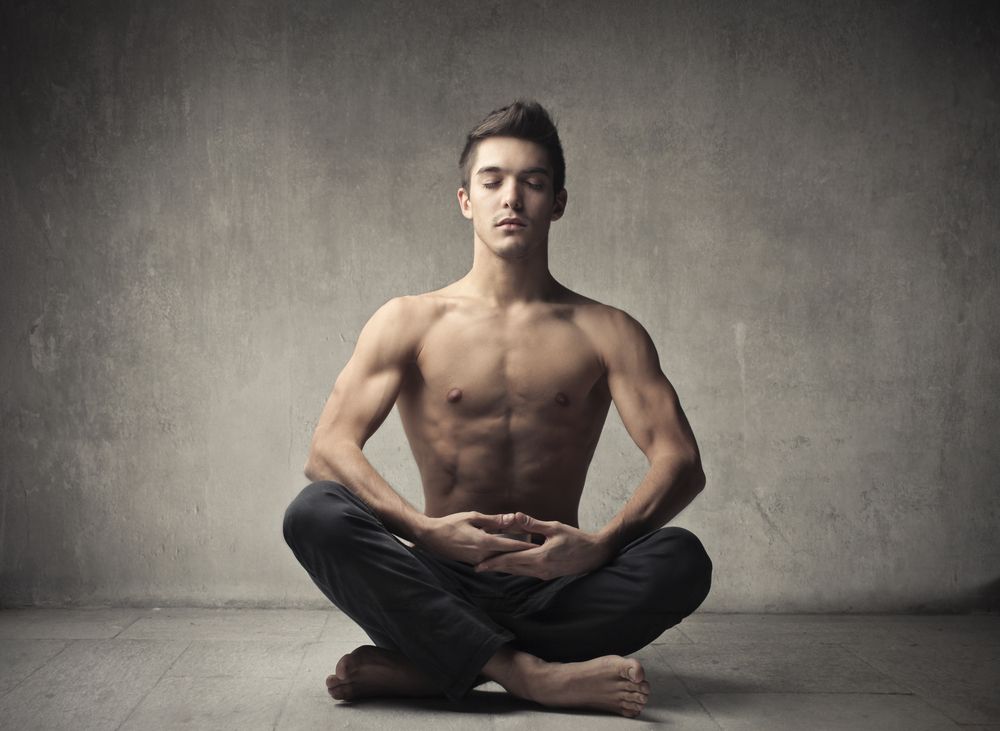Yoga: Benefits, Risks & Different Types

Almost every gym and fitness center nowadays offers at least one class in yoga, a workout that involves performing a series of flexibility- and strength-building poses.
But yoga is more than just an exercise. It's also a spiritual discipline with a long history — and aspects that don't involve downward-facing dog poses. In fact, the word "yoga" translates loosely to "to yoke" or "hitch up," a phrase that emphasizes the practice's focus on mind-body unity.
The history of yoga
Yoga originated in India. The beginnings of the tradition are uncertain, but in the second or third century A.D., an Indian scholar named Patañjal penned the Yoga Sutras, 196 aphorisms that ultimately defined yoga as "the stilling of the changing states of the mind." Today, the Yoga Sutras are considered the fundamental text of yoga, though the practice itself certainly predates Patañjal's treatise.
The Yoga Sutras define eight "limbs" of yoga, only one of which is the poses, or asanas, practiced in gyms and studios around the world today. These limbs are:
- Yama, which has to do with how to relate to the outside world. Yama consists of five prohibitions: Ahimsa (non-violence), Satya (non-illusion or truth), Asteya (non-covetousness), Brahmacharya (abstinence) and Aparigraha (non-possessiveness).
- Niyama, ways to relate to one's inner self. Niyama requires Shaucha (cleanliness, both physical and mental), Santosha (satisfaction with one's self and possessions), Tapas (bodily and mental discipline), Svadhyaya (study of the Vedas, Hinduism's oldest scriptures), and Ishvarapranidhana (surrender to God).
- Asana, or the practice of yoga postures.
- Pranayama, or the control of the life force and life energies (known as prana). Usually practiced in the form of breath control.
- Pratyahara, or withdrawal from physical stimulus.
- Dharana, or the practice of concentrating attention. Focuses of attention often include the Anja Chakra, or "third eye," a spot between the eyebrows on the forehead, or a mental image of a diety.
- Dhyana, or meditation.
- Samadhi, the state of oneness with the object of meditation, in which the self and the object (a deity, a candle flame or some other focus), merge. [7 Reasons You Should Meditate]
Types of yoga
The first hint of yoga in the Western world came courtesy of an Indian monk named Vivekananda, who arrived in Chicago in 1893 to lecture enraptured audiences about Eastern teachings, according to a 2011 article in the New York Times. Vivekananda cared little for the asana side of yoga, focusing more on meditation and worship of God.
The first Western yogis, then, were not crunchy types in the 1970s, but hippies of an earlier age. In 1947, Indra Devi opened the first yoga studio in the United States, in Hollywood. A yogi named Richard Hittleman published popular books about yoga, downplaying the spiritual side for American audiences, throughout the 1950s and 1960s. Seeds like Hittleman's set the stage for an explosion of interest in swamis and gurus in the 1960s, according to Yoga Journal.
Today, Western yoga practitioners have their choice of practice, from gentle and restorative to hot and sweaty. Some delve into the spiritual angle, while others focus on the physical challenge. A few of the more popular varieties of yoga available in studios today include:
- Anusara yoga, a school invented in 1997 that emphasizes innate goodness and beauty. Poses focus on the heart and are linked with the breath, and all classes end with savasana, or "corpse pose," a meditation conducted while resting, totally relaxed, on the back. This form of yoga is a familiar one to most American practitioners.
- Bikram yoga, or "hot yoga," a practice conducted in a room heated to 105 degrees F (40 degrees C). Bikram's creator, Bikram Choudhury, long held a copyright on a series of 26 poses which are always performed in the same way in official Bikram classes, but a 2012 decision by the U.S. Copyright Office determined that yoga poses are not eligible for copyright. Competing yoga teachers have established their own hot yoga practices, which also feature poses performed in warm-to-sweltering rooms, but do not adhere to Bikram's rigid program.
- Iyengar yoga, another practice with a charismatic founder, focuses on perfect alignment with copious use of props such as yoga blocks and straps. Founder B.K.S. Iyengar is a major yoga popularizer and encourages students to start with simple poses before moving to more rigorous postures.
- Kundalini yoga, a practice for those who like to move. Kundalini practitioners think of the life force as a coiled snake at the base of the spine, just waiting to be unleashed by a fluid series of postures meshed with breathwork.
- Power yoga, for gym rats who want to feel the burn. Think yoga meets aerobics. Power yoga evolved in the United States in the 1990s, and is a vinyasa-style practice, meaning that participants flow through a series of (often tough) poses while matching the movement to their inhales and exhales. Unlike Bikram or Iyengar, power yoga varies widely depending on the instructor.
Risks and benefits of yoga
Yoga's benefits are both physical and mental, studies show. Yoga poses sooth the pain of the chronic condition fibromyalgia, according to research published in October 2010 in the journal Pain. A yoga practice was about as effective as medication for patients with the conditions.
Yoga at work may ease back pain and stress, and the practice might also reduce inflammation, an immune response that can contribute to heart disease and other chronic conditions. A review of 16 studies on yoga's mental health benefits, published in January 2013, found that practicing yoga can help improve symptoms for people with depression. The same study also found that yoga can ease sleep problems, even without sleep medications.
Like any exercise, though, yoga can have risks. People with herniated disks or osteoporosis, for example, should avoid deep forward bends, and anyone with neck problems should steer clear of headstands, Loren Fishman, a New York City physician who is also a yoga instructor, told LiveScience in 2012. Talking to a doctor about specific issues before starting a practice is recommended, as is letting your yoga teacher know of any limitations.
Follow Stephanie Pappas on Twitter and Google+. Follow us @livescience, Facebook & Google+.
Sign up for the Live Science daily newsletter now
Get the world’s most fascinating discoveries delivered straight to your inbox.

Stephanie Pappas is a contributing writer for Live Science, covering topics ranging from geoscience to archaeology to the human brain and behavior. She was previously a senior writer for Live Science but is now a freelancer based in Denver, Colorado, and regularly contributes to Scientific American and The Monitor, the monthly magazine of the American Psychological Association. Stephanie received a bachelor's degree in psychology from the University of South Carolina and a graduate certificate in science communication from the University of California, Santa Cruz.











